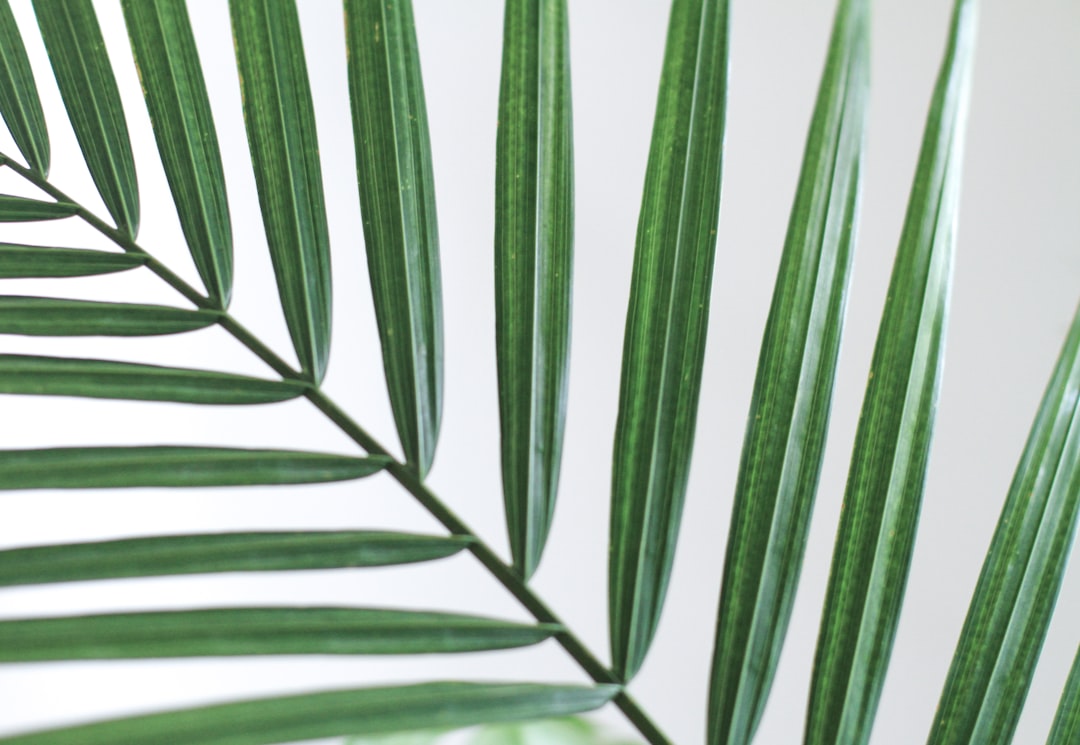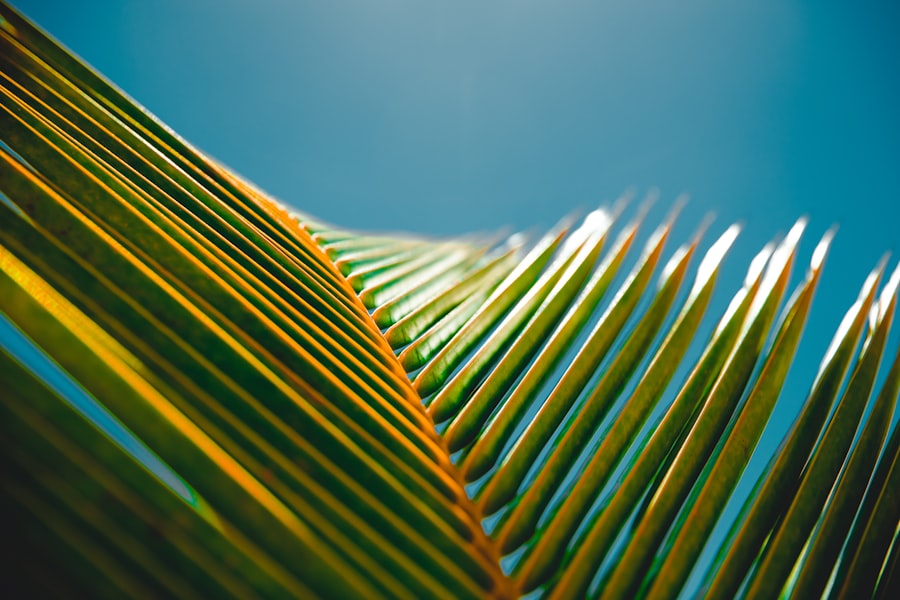Jade Plant Watering: How Often to Keep Them Thriving

Jade plants, also known as Crassula ovata, are a popular choice for indoor plants due to their attractive appearance and low maintenance requirements. These succulent plants have thick, fleshy leaves that store water, making them well-suited for dry indoor environments. They are native to South Africa and Mozambique and are often referred to as “money plants” or “money trees” because they are believed to bring good luck and prosperity.
One of the most important aspects of caring for jade plants is proper watering. Watering plays a crucial role in the health and well-being of these plants, as it directly affects their growth and overall condition. Understanding the watering needs of jade plants is essential for keeping them thriving and preventing common issues such as root rot or dehydration.
Key Takeaways
- Jade plants are a popular indoor succulent that require proper watering to thrive.
- Understanding the watering needs of jade plants is crucial for their health and longevity.
- Factors affecting jade plant watering frequency include climate, pot size, and soil type.
- Signs of overwatering and underwatering in jade plants include yellowing leaves and root rot.
- Best practices for watering jade plants include allowing the soil to dry out between waterings and using well-draining soil and pots.
Understanding the Watering Needs of Jade Plants
Several factors influence the watering needs of jade plants. These factors include the plant’s size and age, the amount of light it receives, the temperature and humidity levels in its environment, and the type of soil it is planted in. It is important to strike a balance when watering jade plants, as both overwatering and underwatering can be detrimental to their health.
Overwatering is a common mistake made by many jade plant owners. These plants are adapted to survive in arid conditions, so they do not require frequent watering. Overwatering can lead to root rot, where the roots become waterlogged and start to decay. This can cause the plant’s leaves to turn yellow or brown and eventually fall off. On the other hand, underwatering can cause the leaves to shrivel up and become dry.
Factors Affecting Jade Plant Watering Frequency
The frequency at which you should water your jade plant depends on several factors. One of the most important factors is the amount of light the plant receives. Jade plants require bright, indirect light to thrive. If your plant is placed in a location with low light levels, it will require less water compared to a plant that receives more sunlight.
Temperature and humidity levels also play a role in determining the watering needs of jade plants. In warmer temperatures, the soil tends to dry out more quickly, so you may need to water your plant more frequently. Similarly, if the humidity levels in your home are low, the soil will dry out faster, requiring more frequent watering.
The size and age of the plant also affect its watering needs. Younger plants have smaller root systems and therefore require less water compared to mature plants. As the plant grows and develops a larger root system, it will require more water to sustain its growth.
Signs of Overwatering and Underwatering in Jade Plants
| Signs of Overwatering | Signs of Underwatering |
|---|---|
| Yellowing leaves | Yellowing leaves |
| Mushy or soft leaves | Leaves that are dry and brittle |
| Root rot | Wilting leaves |
| Fungus gnats | Slow growth |
| Soil that is constantly wet | Soil that is dry to the touch |
It is important to be able to recognize the signs of overwatering and underwatering in jade plants to prevent any damage to the plant’s health. Overwatering can lead to root rot, which is characterized by yellowing leaves that eventually fall off. The leaves may also become soft and mushy to the touch. If you notice a foul smell coming from the soil or see black or brown roots when you remove the plant from its pot, it is a clear sign of root rot.
On the other hand, underwatering can cause the leaves of jade plants to shrivel up and become dry. The leaves may also turn yellow or brown and feel crispy to the touch. The plant may also exhibit slow growth or stop growing altogether.
How to Water Jade Plants: Best Practices and Techniques
To properly water jade plants, it is important to follow some best practices and techniques. First, it is crucial to water jade plants thoroughly but infrequently. Allow the soil to dry out between waterings to prevent overwatering. When watering, make sure to saturate the soil completely, allowing the excess water to drain out of the pot.
There are several methods you can use to water jade plants. One popular method is bottom watering, where you place the pot in a tray filled with water and allow the plant to soak up the water through the drainage holes. This ensures that the roots receive adequate moisture without risking overwatering.
Misting is another technique that can be used to provide moisture to jade plants. This is especially useful in dry environments or during the winter months when indoor humidity levels tend to be low. Simply mist the leaves of the plant with water using a spray bottle.
It is important to note that jade plants do not like standing water, so it is crucial to provide proper drainage. Make sure your pot has drainage holes at the bottom to allow excess water to escape. If your pot does not have drainage holes, consider repotting your plant into a container that does.
Watering Jade Plants in Different Seasons and Climates

The watering needs of jade plants may vary depending on the season and climate you live in. During the summer months, when temperatures are higher and humidity levels are lower, jade plants may require more frequent watering. On the other hand, during the winter months, when indoor heating can cause dry air, you may need to reduce the frequency of watering.
In dry climates, where humidity levels are naturally low, it is important to monitor the moisture levels of the soil more closely. You may need to water your jade plant more frequently or use additional methods such as misting to provide adequate moisture.
In humid climates, where humidity levels are naturally high, you may need to reduce the frequency of watering to prevent overwatering. The excess moisture in the air can cause the soil to stay damp for longer periods, increasing the risk of root rot.
Choosing the Right Soil and Pot for Jade Plant Watering
Choosing the right soil and pot for jade plants is crucial for proper watering. Jade plants require well-draining soil to prevent water from sitting around the roots and causing root rot. A good potting mix for jade plants should be a combination of regular potting soil, perlite, and sand. This mixture allows for proper drainage while retaining enough moisture for the plant’s needs.
When it comes to choosing a pot, opt for one that has drainage holes at the bottom. This allows excess water to escape and prevents water from pooling around the roots. Additionally, choose a pot that is slightly larger than the current size of your jade plant to allow for growth but not too large that it retains excess moisture.
Fertilizing Jade Plants: How It Affects Watering Requirements
Fertilizing is an important aspect of caring for jade plants, as it provides essential nutrients for their growth and overall health. However, it is important to understand how fertilizing affects the watering requirements of these plants.
Fertilizing can increase the watering needs of jade plants, as it promotes growth and increases the demand for water. When fertilizing, it is important to adjust your watering practices accordingly. You may need to water your plant more frequently or increase the amount of water you provide to ensure that the nutrients are properly absorbed by the roots.
Common Problems and Solutions in Jade Plant Watering
Despite your best efforts, you may encounter some common problems when it comes to watering jade plants. One common issue is root rot, which occurs when the roots become waterlogged and start to decay. To prevent root rot, make sure to provide proper drainage by using pots with drainage holes and well-draining soil. Additionally, avoid overwatering and allow the soil to dry out between waterings.
Another common problem is mold or fungus growth on the soil surface. This can occur when the soil remains consistently damp or when there is poor air circulation around the plant. To prevent mold growth, make sure to water your jade plant thoroughly but allow the soil to dry out between waterings. You can also improve air circulation by placing a small fan near the plant.
Keeping Your Jade Plants Healthy and Happy with Proper Watering
Proper watering is essential for the health and well-being of jade plants. Understanding the watering needs of these plants and adjusting your practices accordingly will help keep them thriving and prevent common issues such as root rot or dehydration. Remember to consider factors such as light, temperature, humidity, and the size and age of the plant when determining the watering frequency and amount.
By following best practices and techniques for watering, such as thorough but infrequent watering, bottom watering, and misting, you can ensure that your jade plants receive the right amount of moisture. Additionally, choosing the right soil and pot with proper drainage will further support their health.
Lastly, monitoring your jade plants closely and being attentive to any signs of overwatering or underwatering will allow you to make adjustments as needed. With proper watering practices, your jade plants will thrive and bring beauty to your indoor space for years to come.
If you’re wondering how often to water your jade plants, you’ll find some helpful tips in this article from Lawn World. They provide expert advice on plant care and maintenance, including specific guidelines for watering jade plants. To learn more, check out their informative article here.
FAQs
What is a jade plant?
A jade plant is a succulent plant that is native to South Africa and Mozambique. It is also known as Crassula ovata and is a popular houseplant due to its easy care and attractive appearance.
How often should I water my jade plant?
Jade plants should be watered when the soil is completely dry to the touch. This usually means watering once every two to three weeks, but it can vary depending on the environment and the size of the plant.
What is the best way to water a jade plant?
The best way to water a jade plant is to thoroughly soak the soil until water drains out of the bottom of the pot. It is important not to let the plant sit in standing water, as this can lead to root rot.
What are the signs of overwatering a jade plant?
Signs of overwatering a jade plant include yellowing leaves, soft or mushy stems, and a foul odor coming from the soil. If you notice these signs, it is important to reduce watering and allow the soil to dry out before watering again.
What are the signs of underwatering a jade plant?
Signs of underwatering a jade plant include shriveled leaves, dry soil, and a wilted appearance. If you notice these signs, it is important to water the plant thoroughly and increase the frequency of watering if necessary.
Can I mist my jade plant?
While misting can be beneficial for some plants, it is not necessary for jade plants. In fact, misting can increase the risk of fungal growth and should be avoided.



